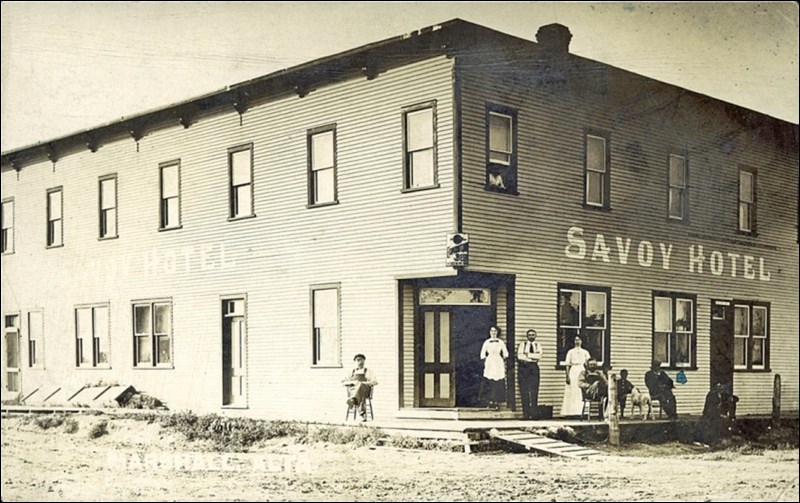Running a small-town Saskatchewan hotel back in the early 1900s was hard work. The hotel staff usually consisted of at least two chambermaids and a cook who worked from morning until night, cleaning the guest rooms, doing the laundry, and washing dishes. Chambermaid Maria’s work day at the Herbert Hotel started at 6 a.m. and ended at 9 p.m. for which she was paid $10 per month, plus room and board. The porter at the Griffin Hotel not only assisted hotel guests with their luggage, he also washed dishes, milked the two cows that supplied the milk for the hotel and did all the odd jobs.
Children of hotel owners had to share in the work. Leo Buehler, whose parents owned the hotel in Fairlight south of Moosomin, recalls that during the 1920s, the kids were expected to help with the housekeeping. “At noon, you had to take your turn at washing the dishes before going back to school,” he recalled. “My sister, Irma, served as a waitress in the dining room when she was barely taller than the table tops.” Henry, son of the owner of the Herbert Hotel, had to carry wood and water to the hotel when needed, and carry out ashes. On Mondays, he always had to skip school to turn the handle on the washing machine. Henry earned an extra dollar teaching the Chinese cook how to speak English.”
The Ferrie family ran the hotel at Invermay for 28 years. In the 1950s, the four Ferrie boys worked shifts hauling great loads of wood to keep the hotel’s furnace running 24 hours a day during the winter months. As Ben Ferrie recalls in the Invermay local history book: “It was the boys’ job to fire the wood-burning furnace. This meant rising about three a.m. and again at six to stoke the furnace …. We were responsible for bringing in blocks of ice and snow to melt for the daily wash. We hauled our drinking water from the town well. A familiar sight around town was our Scotch collie, Don, pulling the sleigh loaded with cans of water.”
Packing ice in the winter was quite an experience. It was necessary to put up about 30 tons of ice to provide year-round cold storage for the hotel kitchen. Hotel owners would often hire a farmer to cut the ice from a nearby river or lake and haul it in with teams and a sleigh, which would take several days.
Wash days – usually Mondays – were an ordeal, especially in winter. Washing bedding and clothes was often a two-day proposition. Water had to be hauled and then heated in tubs the night before. Start-up time was set for 5 or 6 a.m. and the laundry process quite often ran into the afternoon. The next day, one of the maids would run the clothes and sheets through a mangle, a machine used to wring water out of wet laundry. Most small-town Saskatchewan hotels did not get running water until the 1940s or 1950s, so water had to be hauled from a well in the summer. In the winter, hotels used melted ice and snow, or water that had been collected in rain barrels during the previous summer.



